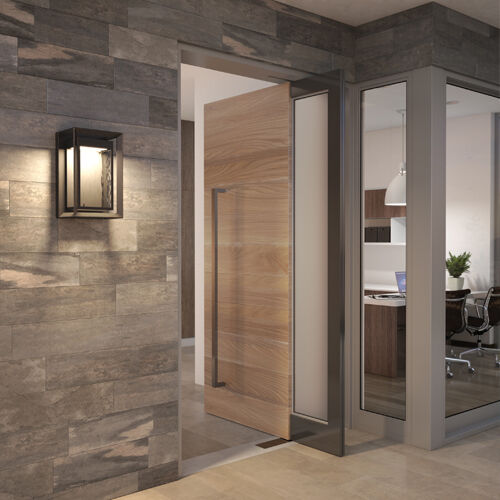Go Green With LED & Smart Home
For 50 years, Earth Day has served as an important reminder of the many environmental benefits of going green. In honor of this year’s Earth Day celebration on April 22nd, 2020, we’re taking a closer look at how LED lighting and smart home devices can help you and the planet.
-
LED Lighting Benefits
Why choose LEDs? These innovative bulbs are not only a cost-effective way to light your home, but they happen to offer their fair share of environmental benefits, as well. Here are just a few ways LED lighting can save you money while helping Mother Earth:
- LED lights use less energy. A 36-watt LED bulb provides the same level of illumination as its 84-watt fluorescent counterparts, which means it uses up to 80% less wattage overall. This can lower your electric bill by 60–70% while decreasing greenhouse gas emissions and lessening the overall workload of power plants.
- LED lights last longer. LEDs can last up to a decade, which is 25 times longer than traditional bulbs. That’s a savings of up to $80 over the lifespan of just one bulb.
- LED lights don’t contain mercury. This toxic chemical is absent from LED bulbs, which means less hazardous waste ending up in our landfills.
- LED lights keep their cool. LED bulbs release significantly less energy as heat, which means they reduce your energy consumption even further by lowering your cooling costs.
-

-

-
How to Upgrade Your Home with LED Bulbs
Hoping to upgrade your home with new LED lights? We recommend starting off by replacing the lights in your most heavily trafficked spaces to maximize your savings. Think living rooms, foyers, kitchens, and dining rooms—wherever you rely on lighting the most.
When it comes to installing new LED bulbs throughout your home, one important consideration to keep in mind is light temperature. Older incandescent bulbs grow dimmer and more yellow over time, so replacing them with new LEDs will instantly make the room look whiter and brighter.
Still, LEDs come in a wide range of temperatures to accommodate your lighting needs. As a general rule of thumb, you’ll want to pay attention to the LED bulb’s “Correlated Color Temperature” or CCT, which is based on the Kelvin (K) temperature scale. Lower Kelvins indicate warmer, more yellow light, while higher Kelvins indicate cooler, bluer tones.
It’s also usually a good idea to replace outdated lights in sets. For instance, all the bulbs in a multi-light fixture should be replaced at the same time to keep the light looking evenly distributed and similar in color temperature.
And while swapping multiple light bulbs for new LEDs may seem expensive initially, the savings will prove worth it in the long run. LEDs have a higher upfront cost, but the investment typically pays for itself within a couple years.
LED Light Bulb Top Picks
-
How Smart Home Devices Can Help Your Energy Efficiency
Another savvy way to lower your energy costs is by incorporating smart home devices into your daily routine. These innovative gadgets offer the following perks:
- Smart thermostats like Nest are ideal for regulating your heating and cooling systems, which means less energy consumption over time.
- Smart bulbs efficiently minimize electricity costs and offer you more control over your environment.
- Smart power strips make it easy to turn off energy-sucking devices like TVs, computers, and video game consoles in a flash via your smartphone.
- Smart dimmers let you control a room’s ambiance by adjusting its lighting as needed. In fact, dimming your lights by just 80% can make an impact on your energy consumption with little visual compromise when it comes to brightness.
- Smart irrigation systems can actually automate garden and lawn watering for you, which can significantly reduce your water usage. Furthermore, smart home technology can help you detect water leaks, preventing potential damage to the structural integrity of your house.
- Smart shower heads can reduce your water consumption by setting usage thresholds.
-

Smart Home Top Picks
-
Recently Viewed










